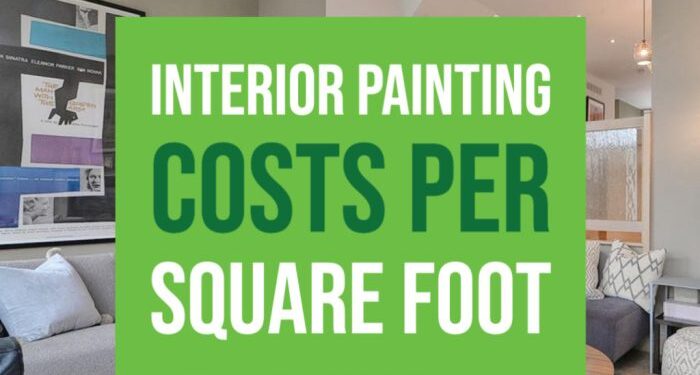Delving into the world of painting wood siding cost, this article sheds light on the various factors and average expenses involved in this essential home improvement task. From understanding the impact of project size to the importance of proper preparation, we uncover all you need to know about the cost dynamics of painting wood siding.
. Different types of paint offer varying benefits and maintenance requirements, so it's essential to understand the options available.
Factors affecting the cost of painting wood siding
When it comes to determining the cost of painting wood siding, several key factors play a significant role in influencing the overall price. Understanding these factors can help homeowners budget effectively and make informed decisions when planning a painting project.Size of the project
The size of the project is a crucial factor that directly impacts the cost of painting wood siding. Larger surfaces require more paint, labor, and time to complete, resulting in higher overall costs. Smaller projects, on the other hand, may be more budget-friendly due to lower material and labor requirements.Type and condition of the wood siding
The type and condition of the wood siding also play a vital role in determining the cost of painting. Different types of wood may absorb paint differently, affecting the amount of paint needed and the overall finish quality. Additionally, the condition of the wood siding, such as existing damage, rot, or mold, may require additional preparation work before painting, increasing the overall cost of the project.Average cost of painting wood siding
When it comes to painting wood siding, the average cost typically ranges from $1.50 to $3.00 per square foot. This cost can vary depending on various factors such as the size of the project, the condition of the wood siding, and the quality of paint used.DIY painting vs. hiring professionals
If you decide to take on the painting project yourself, you can save money on labor costs. However, keep in mind that DIY painting may require you to purchase or rent equipment, tools, and materials, which can add to the overall cost. On the other hand, hiring professional painters may be more expensive upfront but can result in a higher-quality finish and save you time and effort.Additional costs involved
In addition to the cost of paint and labor, there may be some additional costs involved in painting wood siding. These can include:- Preparation:This may involve cleaning, sanding, and priming the wood siding before painting.
- Repairs:If there are any damages or rotting areas on the wood siding, repairs may be needed before painting.
- Trim and accents:Painting trim, accents, or other features on the siding may incur extra costs.
- Protection:Investing in protective coatings or sealants to enhance the durability of the paint job.
Preparation and priming
Proper preparation and priming are crucial steps when it comes to painting wood siding. These steps ensure the longevity and quality of the paint job, providing a smooth and durable finish that can withstand the elements.Importance of proper preparation
- Start by cleaning the wood siding thoroughly to remove any dirt, debris, or mildew. This can be done using a pressure washer or a cleaning solution.
- Repair any damaged areas such as cracks, holes, or rotting wood. This will prevent further damage and create a solid surface for the paint to adhere to.
- Sand the wood siding to create a smooth surface and remove any existing paint or finish. This will help the new paint adhere better and prevent peeling or chipping.
Significance of priming
Priming the wood siding before painting is essential for several reasons:- Primer helps seal the wood, preventing moisture from penetrating and causing rot or warping.
- It provides a uniform surface for the paint to adhere to, ensuring a smooth and consistent finish.
- Primer can also improve the durability and longevity of the paint job, protecting the wood from damage and wear over time.
Types of paint for wood siding
When it comes to painting wood siding, choosing the right type of paint is crucial for achieving a long-lasting and durable finishOil-based paint
Oil-based paint has been a popular choice for wood siding due to its durability and resistance to wear and tear. It provides a smooth finish and excellent protection against the elements. However, oil-based paints tend to yellow over time and can be more challenging to clean up than water-based alternatives.Water-based paint
Water-based paint, also known as latex paint, is another common option for painting wood siding. It dries faster, emits fewer odors, and is easier to clean up with soap and water. While water-based paints may not be as durable as oil-based paints, they offer better color retention and flexibility, making them a popular choice for many homeowners.Comparison
When deciding between oil-based and water-based paints for wood siding, it ultimately comes down to personal preference and specific project requirements. Oil-based paints are known for their durability and longevity, while water-based paints offer easier application and cleanup. Consider factors such as the climate, exposure to sunlight, and maintenance requirements when choosing the right paint for your wood siding project.DIY vs. hiring professionals
When it comes to painting wood siding, homeowners often face the decision of whether to tackle the project themselves or hire professional painters. Each option comes with its own set of advantages and disadvantages, so it's essential to weigh your options carefully.Advantages and disadvantages of painting wood siding yourself
- Advantages:
- Cost-saving: Doing it yourself can save you money on labor costs.
- Sense of accomplishment: Completing a DIY project can be rewarding.
- Flexibility: You can work on your own schedule.
- Disadvantages:
- Time-consuming: Painting wood siding can be a labor-intensive task.
- Skill required: It requires proper technique and expertise to ensure a professional finish.
- Risk of mistakes: Errors in painting can lead to costly repairs in the future.
Tips for those considering a DIY approach to painting wood siding
- Prepare the surface properly by cleaning and sanding the wood siding.
- Use high-quality paint and tools to ensure a smooth and durable finish.
- Work in small sections to avoid drips and overlaps.
- Protect surrounding areas with painter's tape and drop cloths.
- Consider the weather conditions before starting the project to ensure optimal drying time.
Benefits of hiring professional painters for wood siding projects
- Expertise: Professional painters have the skills and experience to deliver a high-quality finish.
- Time-saving: Hiring professionals can expedite the painting process and free up your time.
- Quality results: Professionals use top-notch materials and techniques for long-lasting results.
- Insurance coverage: Professional painters are often insured, protecting you from any damages or accidents during the project.
















